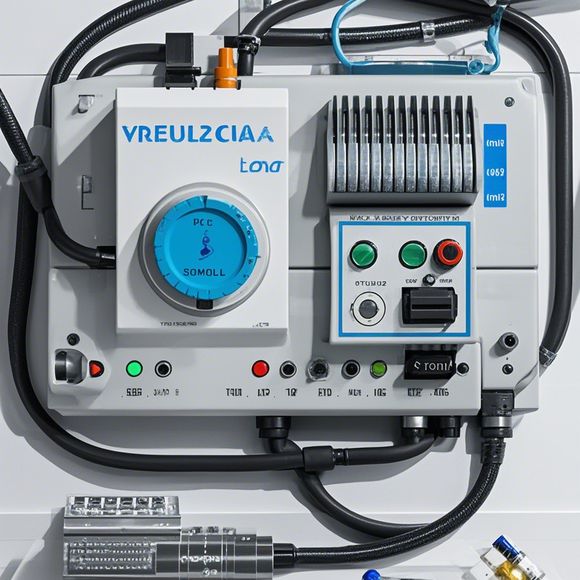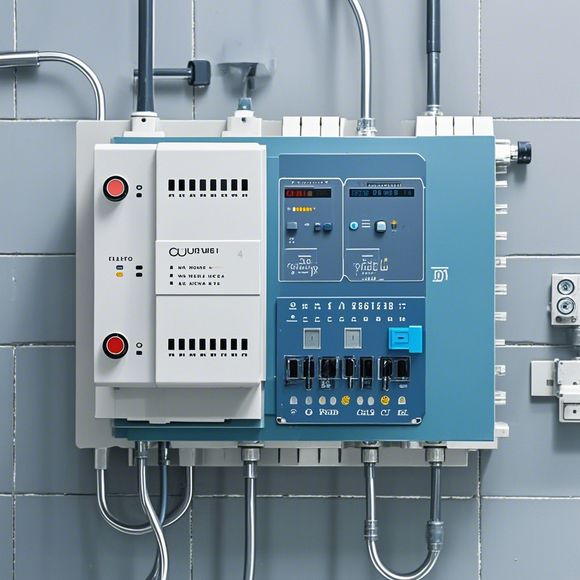PLC (Programmable Logic Controller) for Automation Systems: An Integrated Overview
In this integrated overview, we explore the role and importance of Programmable Logic Controllers (PLC) in automation systems. PLCs are devices that allow for the control and management of various industrial processes through digital logic circuitry. They are designed to handle complex tasks such as sequencing, monitoring, and controlling equipment in a safe and efficient manner. The primary function of PLCs involves interfacing with sensors, actuators, and other control devices to execute commands and make decisions based on data received.The use of PLCs in automation systems has revolutionized industries such as manufacturing, transportation, and healthcare, making it possible to automate complex processes without the need for human intervention. PLCs offer a range of benefits, including increased efficiency, reduced downtime, and enhanced safety. They can be programmed to perform specific tasks or functions, allowing for greater flexibility and adaptability in different environments. Additionally, PLCs can integrate with other types of automation systems such as HMI (Human Machine Interface) and SCADA (Supervisory Control and Data Acquisition) technologies, further enhancing their capabilities.
1、The Importance of PLCs in Modern Industrial Automation
- PLCs are crucial components in industrial automation, enabling precise and efficient control of complex systems. They provide the ability to manage and monitor various processes, such as manufacturing, transportation, and healthcare, through a simple and intuitive interface.
2、Functionality of PLCs in Controlling Complex Systems
- PLCs can handle a wide range of tasks, including temperature regulation, process monitoring, material handling, and safety features. They can be customized to meet specific requirements, making them a valuable asset in any production environment.

3、Advantages of PLCs Over Other Forms of Automation
- PLCs offer significant advantages over traditional manual or mechanical controls, including reduced maintenance needs, increased efficiency, and improved accuracy. Their modular design also allows for easy expansion and upgrades.
4、Role in Managing Safety in Industrial Settings
- In industries where safety is paramount, PLCs play a critical role in managing hazardous processes. They can integrate with alarm systems, emergency response protocols, and other safety features to ensure the safety of workers and assets.
5、Integration of PLCs with Other Automation Technologies
- PLCs can be integrated with other automation technologies, such as robotics, SCADA (Supervisory Control And Data Acquisition), and HMI (Human-Machine Interface) systems, to create a comprehensive automation solution. This integration allows for seamless communication between different systems and ensures optimal performance across the entire system.
6、Benefits of PLCs for Cost Efficiency
- One of the most significant benefits of PLCs is their cost-effectiveness. Compared to other automation solutions, PLCs offer a more affordable option that can save businesses money in the long run. They require minimal hardware and software investments, and can be easily maintained and updated.
7、Challenges in Implementing PLCs in New Industries
- While PLCs are becoming increasingly popular, implementing them in new industries can present challenges. Businesses need to consider factors such as the complexity of the processes they are controlling, the availability of skilled personnel, and the cost and time required for implementation.
8、Future of PLCs in the Automation World
- As technology continues to advance, PLCs are expected to play an even greater role in future automation systems. New developments in PLC programming languages, sensors, and connectivity options will make them even more capable and accessible to businesses worldwide.
9、Maintaining the Health of PLCs
- To ensure optimal performance and longevity, it is important to maintain PLCs regularly. This includes regular software updates, hardware replacement when necessary, and proper documentation of maintenance procedures.
10、The Role of PLCs in Emerging Markets
- In emerging markets, PLCs offer a cost-effective way to bring advanced automation capabilities to small and mid-sized enterprises. They can help these businesses compete on a level playing field with larger companies that may not have access to traditional automation technology.
11、Challenges in Providing Training to Workers with Limited Experience
- For workers who are unfamiliar with PLC programming, providing adequate training can be a challenge. Organizations need to invest in training programs that are tailored to the specific needs of their workforce and offer hands-on experience in using the PLC software and hardware.
12、Balancing Automation with Human Factors in Industry Processes

- While automation can enhance efficiency and productivity, it is essential to balance it with human factors to ensure safe and ethical operations. This requires careful consideration of the workload, task analysis, and potential impacts on worker safety and well-being.
13、Encouraging Innovation in PLC Development
- To stay competitive in the automation industry, companies must continue to innovate in PLC development. This involves investing in research and development, exploring new application areas, and collaborating with industry leaders and academic institutions to develop cutting-edge solutions.
14、The Impact of IoT on PLCs
- The Internet of Things (IoT) has had a significant impact on PLC development, allowing for more sophisticated interconnectivity between devices and applications. This enables real-time monitoring, data analysis, and predictive maintenance, enhancing overall system performance and reliability.
15、Balancing Resource Consumption with PLC Performance
- When designing PLC systems, there is a delicate balance needed to strike between resource consumption and performance. It is important to optimize hardware configurations, use appropriate software optimization techniques, and implement efficient algorithms to achieve optimal results while minimizing energy usage.
16、Addressing Privacy Concerns with IoT Data
- As more IoT data is generated and shared, privacy concerns arise. PLC systems need to incorporate robust security measures to protect sensitive information from unauthorized access or breaches. This includes encryption, authentication, and permission management features.
17、The Role of Standardization in PLC Applications
- Standardization plays a critical role in ensuring that PLC applications are consistent across different industries and regions. International standards such as IEC (International Electro technical Commission) standards and ANSI/ISA (American National Standards Institute/Industry Software Architecture) standards are used to promote interoperability and compatibility.
18、Enhancing the User Experience with Modular PLC Designs
- By adopting modular PLC designs, manufacturers can offer customizable options for users, making it easier to tailor the software to meet specific requirements without sacrificing performance. This approach enhances user engagement and satisfaction with the product.
19、Balancing Security with Usability in PLC Systems
- While security is a top priority for PLC systems, ensuring that they are also user-friendly and intuitive is crucial for adoption. Companies need to strike a fine balance between providing robust security features and simplifying the interface so that end-users can effectively use the system.
20、The Future of PLCs in Smart City Initiatives
- As cities become more technologically advanced, PLCs play an integral role in managing smart city infrastructure. These systems can optimize energy consumption, improve public safety, and enhance overall sustainability by integrating various smart technologies into a cohesive whole.
Content expansion reading:
Articles related to the knowledge points of this article:
Smart Manufacturing Solutions with PLC Integrated Machinery
Mastering the Art of Plc Controllers: A Comprehensive Guide to Understand and Implement
PLC Programming for Automation Control in the Manufacturing Industry
How to Use a PLC Controller for Your Business
PLC (Programmable Logic Controller) Control System Basics
The Role of Programmable Logic Controllers (PLCs) in Foreign Trade Operations